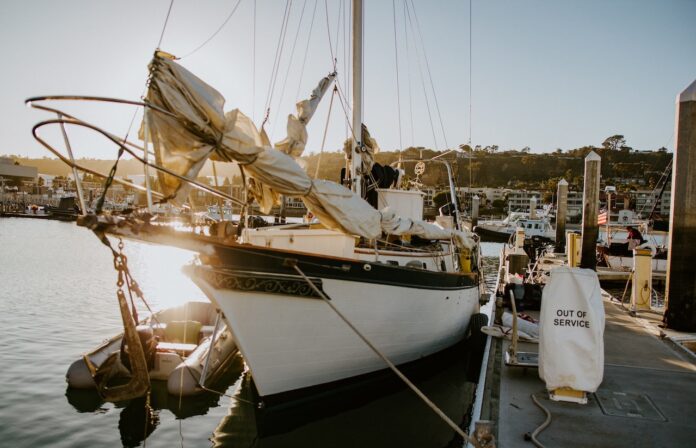Did you save up enough to buy your dream boat? Having trouble figuring out how you can finance it? Check this immersive guide to learn more about it!
Imagine you’re on a boat with your best companions surrounding you. You’re carefree, out in the water enjoying a much-needed day off. There’s food, drinks, and the sun, what more could you possibly ask for?
The great thing about this imagination is that it can become your reality. So, how can you make it possible? Don’t worry, that’s why we’re here!
Whatever your reason for buying a boat might be, it goes without saying that you need to put a lot of thought and research before buying one. Because one wrong decision can result in loss of significant money and your imagination from dying.
In this guide, we’ll be discussing the budget, types of boats, and what you need to do before financing one. So, let’s not waste any more time, and get straight to it!
Contemplating Your Budget
Going to that point in life where you can afford your dream boat must feel very satisfying. So, it’s only fair to let you know that boats are expensive.
The key here is for you to be realistic with your budget. Take your time to consider everything, including the long-term financial obligation. There are boat loans that are known to have terms of up to 20 years.
Together with the monthly payment, you’ll have to consider the cost of fuel, a storage place for winter, maintenance, insurance, and a slip at a dock. And it doesn’t end there, boats also tend to depreciate quickly too.
You’ll have to keep spending more money after your boat to keep it in shape. Check out boats for sale and figure out how you can plan your budget accordingly.
Take a Look at the Type of Boats
Now that we’re done talking about budgets, it’s time to get to the fun part – the boats!
You might be thinking about sailing on the open ocean or just breezing through the tranquility of harbors and lakes. Maybe you’re interested in wakeboarding or finding hidden reefs for snorkeling?
Whatever it is that you want to do, it’s essential for you to figure out how you’ll be using it and which boat will be the right choice for you.
Now, let’s take a look at the types of boats:
Pontoon Boats
Known for their signature look that comes from them resting upon aluminum logs, Pontoon boats are mainly seen around harbors and freshwaters because they are not made for rough waters.
If you’re looking for a boat that has magnificent stability and wide-open deck space, this is the boat for you. Pontoon boats are popular in the freshwater boating community for multipurpose recreational use. And, they tend to be reasonably priced.
There are models available that come with improved designs compared to older ones. So, check that out, and you might find a boat that you like!
Runabouts
Runabout boats were made for those who like not only to show up late but to show up in style.
This type of boat is quite popular in freshwater communities and is great for cruising around lakes. They’re very comfortable to sail and are perfect for getting you from one place to another.
However, they are quite limited when it comes to function, and are not ideal for water sports. Basically, this boat is excellent for sipping drinks with your buddies and soaking up some sun.
Bowriders
Designed with a super comfortable seating area in the forward cockpit, a Bowrider is more seaworthy than a Pontoon boat.
Unlike the Pontoon, Bowriders are a multi-purpose boat, meaning you can easily use it for day trips and water sports. Keep in mind that most of those boats don’t have an overnight cabin, so only day trips are possible!
Since the main highlight is the seating arrangement in the bow, sitting there will make you feel like flying over the water. You can even share that experience with your friends by taking them along with you!
Cruisers
Another step up in seaworthiness from a Bowrider are Cruisers. While they might not have the open bow style, they make it up with an enclosed cabin. This is great if you’re an enthusiast for overnight trips.
Think dinner and music with your family or loved one, you can even dive off from the back once you reach your getaway destination.
It’s a popular choice among many, because of its seaworthiness. If you encounter a wave, it’ll just wash off instead of drenching everyone aboard.
They’re also ideal for water sports too!
Buying the Boat
So, once you’ve found your desired boat that you want to buy, the next steps are simple! It’s just the same as when you’re buying a car. Let’s take a look at important some factors you should be focusing on:
Reviews and Test Drives
Always check the reviews. Research is extremely vital as it will give you an idea of the safety and reliability of the boat.
Find out all you can about the boat you’re going to buy from the boat dealer. Get an idea of what they think, and don’t forget their reviews as well!
Besides reviews, test drives and boat inspection are vital too. If you don’t have any prior experience with boating, take someone with you who has. A mechanic or marine surveyor can be helpful too, so you can take them with you as well.
They’ll be able to give you an idea about how the boat runs and if you will feel comfortable at the helm or not.
A Visual Walkaround
A visual walk around means doing a high-level assessment of the whole boat. This does fall under boat inspection, but it’s more thorough than that.
Start by checking the engine and mechanical equipment. Then move on to the hull, the deck, and gel coat. It’s best to do these checks when on dry land rather than on the water.
If you’re buying a used boat, keep an eye out for cracks, ripped seams, and nicks. Small details like this will help to assess other issues that aren’t visible to the naked eye.
Get to Know the Boat’s History
It’s always a good idea to speak with whomever you’re buying the boat from. If they are a previous owner then that’s amazing, if they aren’t the owners themselves, talk to them anyway.
Find out why they want to part with their boat and ask for the contact information of the mechanic who worked on it. Getting to talk to them and finding out more about the history of your boat will help you to know the boat more deeply.
So, find out all you can!
Hours in the Water
In the case of a boat, the usage is usually measured in hours rather than miles. Learning about the boat’s hours in the water can greatly affect future maintenance costs. Not only that, but it can help with the transfer of any remaining warranties as well.
Financing a Boat
When it comes to financing a boat, you have to find and choose a lender who has solid credentials. If you do an online search for boat loans, you will see there are several options.
Remember, having a boat means you’ll be making a considerable, long-term commitment. So, having a lender you can trust will be handy.
Below is a list of tips that will help get you through the financial process:
Don’t overlook the Fine Print
It is the same as with any form of vehicle loan, compare everything – the lenders; their fees, processing charges, rates, etc. Always make sure to read the fine print.
You never know, some of these can have costs hidden in them. It’s better to know beforehand rather than finding it out later. You definitely don’t need the confusion or the surprise.
Know Your Credit Score
Having a high credit score means you’ll be able to qualify for lower rates. So, before you apply for a loan, find out your credit score. It’s very easy, all you have to do is request a report from any of the three major credit reporting agencies!
Identify the Types of Loans
You’ll come across a number of lenders who’ll offer you boat loans as variable-rate, fixed-rate, and even balloon loans.
Understanding the difference between the three will help you to get a much better idea about the way it can affect your monthly payment over the term of the loans.
If you can, have a significant down payment. There’ll be less to finance, which in turn will result in lower monthly payments. Not only that, but you’ll also have a chance at getting favorable loan rates as well.
Around 20% of your financial purchase price is a great target for your down payment. Try to go with that.
Necessary Information
You’ll be required to give certain information about yourself when applying for a loan. This includes your tax information for the last two years, current employment information, a list of your monthly bills, and a personal financial statement.
The lender will need to look at your assets and liabilities to figure out if you can afford the monthly payment of a boat loan. Having all the information about the boat you intend to buy helps too.
So, make sure to mention the year, make, model, options, and power.
Final Thoughts
In conclusion, we’d like to say that making a decision to buy a boat can be very daunting, thanks to the significant financial obligation.
So, it’s only right for you to first do the proper planning and research. Never hesitate to ask questions and seek professional advice.
Now, you have all the information you need to get started. We hope our guide helps to take you a step closer to get that dream boat and make it your reality! Don’t forget to share this article and let us know how we helped. Happy sailing!







